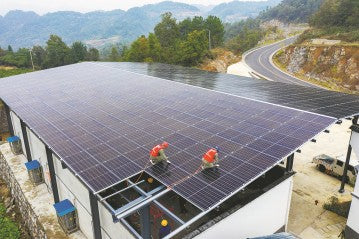
Solar energy has become an increasingly popular and important source of renewable energy. As we strive for a sustainable future, solar battery systems have emerged as a crucial component in harnessing and storing solar energy efficiently. In this blog post, we will delve into the workings of solar battery systems, exploring their key components and mechanisms that make them the cornerstone of a greener tomorrow.
Understanding Solar Battery Systems: An Overview
Solar battery systems are an innovative technology that enables the conversion of solar energy into usable electricity, even during non-sunlight hours or peak demand periods. By storing excess energy generated by solar panels, these systems ensure a continuous power supply, reducing reliance on the traditional grid. The benefits are twofold: optimizing energy efficiency and minimizing the carbon footprint.
Key Components of Solar Battery Systems
1. Photovoltaic (PV) Panels
At the heart of solar battery systems are PV panels, which capture sunlight and convert it into direct current (DC) electricity. These panels are typically made of either monocrystalline, polycrystalline, or thin-film materials. Monocrystalline panels, known for their high efficiency, are composed of single-crystal silicon cells. Polycrystalline panels, on the other hand, consist of multiple silicon fragments, offering a cost-effective option. Thin-film panels, made from semiconductor materials, are flexible and lightweight, suitable for specific applications. Proper installation and positioning of PV panels are essential to maximize solar energy absorption and optimize their performance.
2. Charge Controller
The charge controller acts as a crucial intermediary between the PV panels and the solar battery. Its primary function is to regulate the flow of electricity, ensuring that the battery receives an optimal charge without overcharging or undercharging. By preventing these battery-damaging scenarios, the charge controller plays a pivotal role in extending the lifespan of the battery. It also protects the system from electrical faults and short circuits, providing a reliable and safe energy storage solution.
3. Solar Battery
Solar batteries are the backbone of the system, storing the electricity generated by the PV panels for later use. There are several types of solar batteries available, with lithium-ion, lead-acid, and saltwater batteries being the most common. Lithium-ion batteries are popular for their high energy density, longer lifespan, and lower maintenance requirements. Lead-acid batteries, while less efficient, offer a more affordable option. Saltwater batteries, a relatively newer technology, are non-toxic and environmentally friendly. Battery capacity, voltage, and depth of discharge (DoD) are critical factors in determining the storage capacity and overall efficiency of the solar battery system.
The Working Mechanism of Solar Battery Systems
Now, let's take a closer look at how solar battery systems operate to deliver uninterrupted power supply. The process begins with the PV panels absorbing sunlight and converting it into DC electricity. The charge controller regulates the flow of electricity from the PV panels to the battery, ensuring a proper charge and protecting against potential damage. The solar battery stores the electricity for later use, while an inverter converts the DC electricity into alternating current (AC) electricity, which can power household appliances. Net metering and grid interaction mechanisms allow excess energy to be fed back into the grid, earning credits, or draw energy from the grid when needed. This grid interaction ensures a stable and reliable energy supply, even during periods of high demand or low sunlight.
Conclusion
Solar battery systems are revolutionizing the way we harness and utilize solar energy. By combining the power of PV panels, charge controllers, and efficient solar batteries, these systems offer a sustainable and cost-effective solution for meeting our energy needs. As we strive to build a greener future, integrating solar battery systems into our homes and businesses can significantly reduce our carbon footprint and promote a more sustainable planet. Embrace the power of solar battery systems and join the renewable energy revolution today!

0 comments